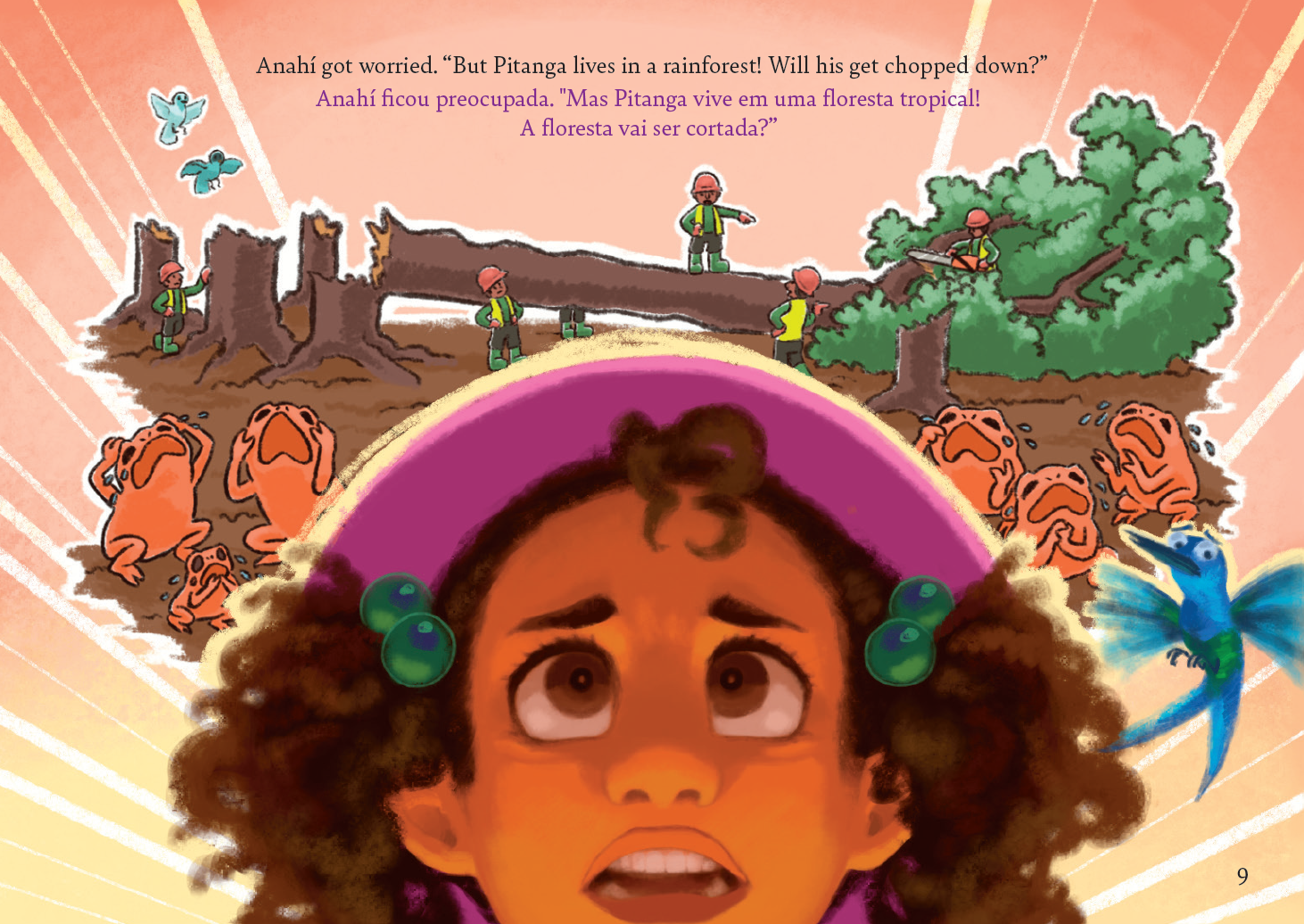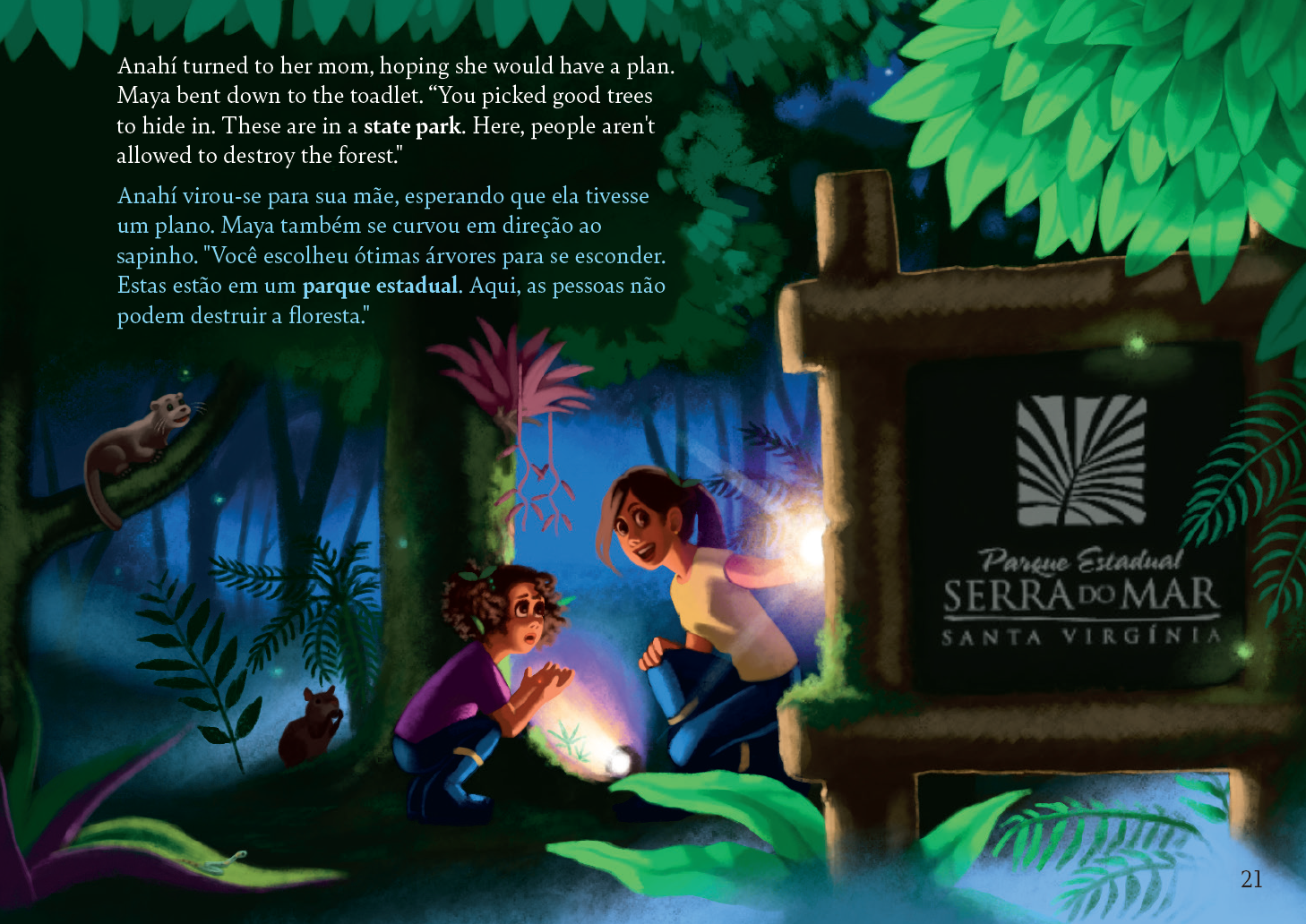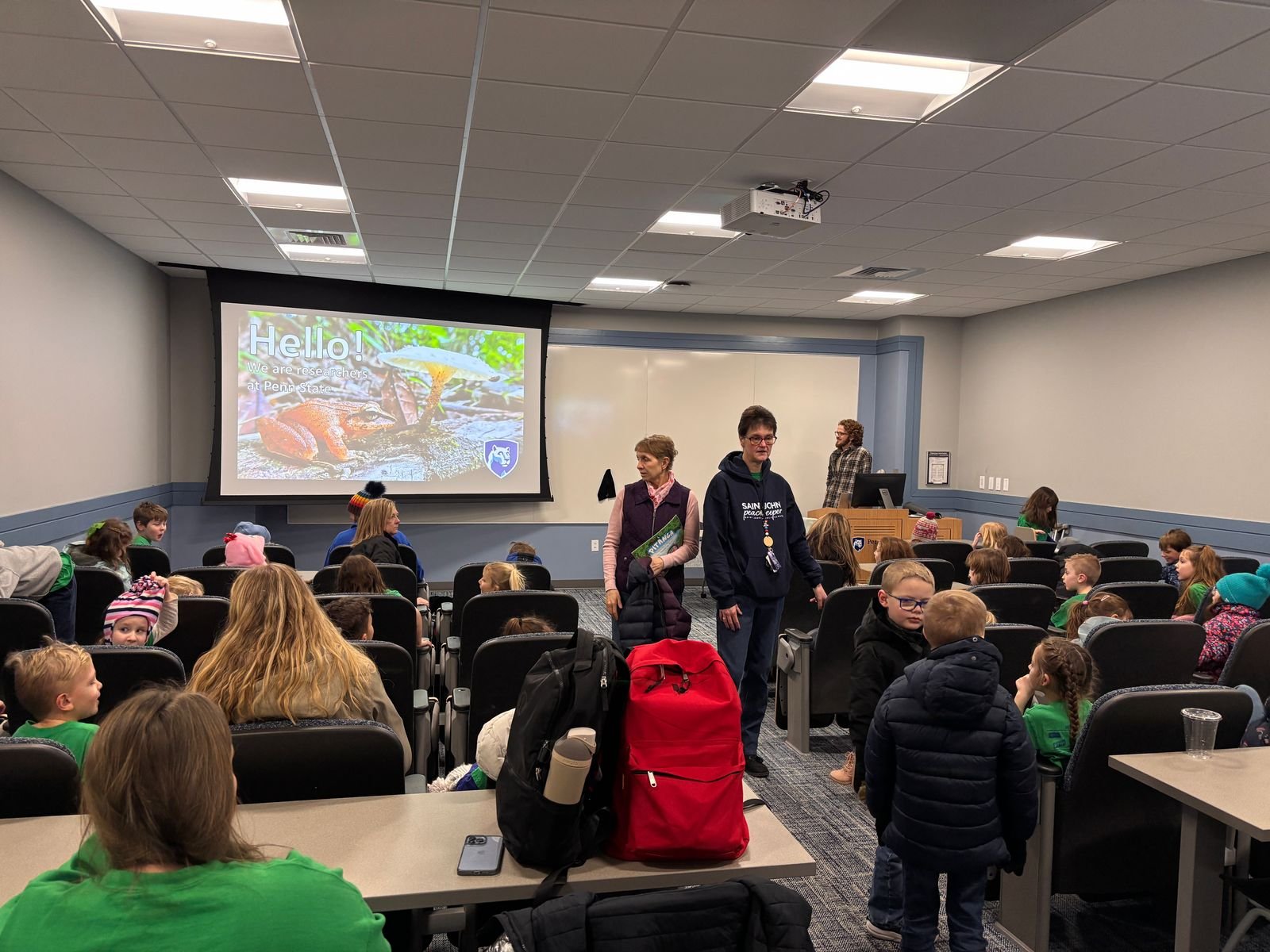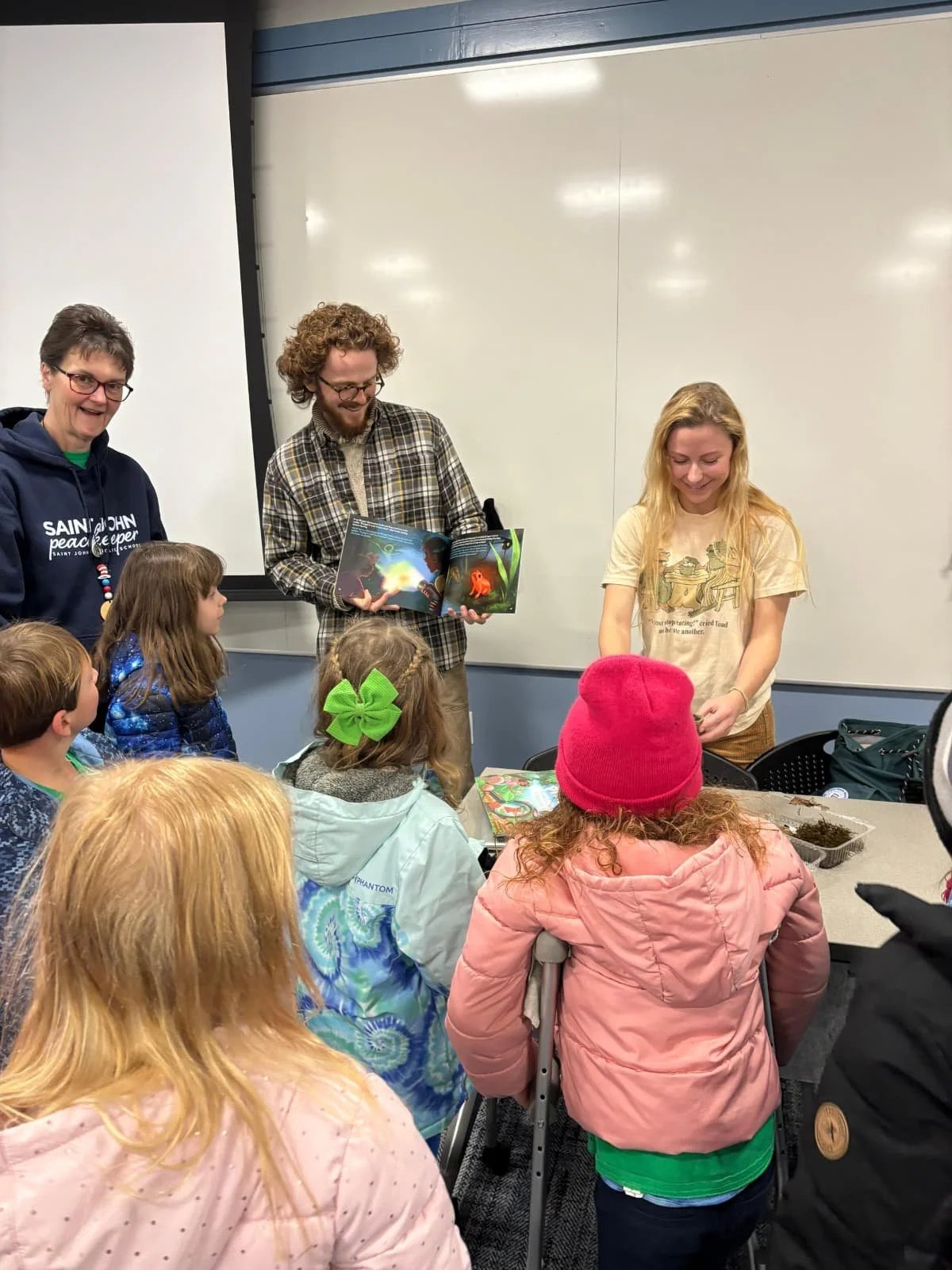Self published book: Pitanga - Trouble for a Tiny Frog
The Becker Lab recently completed a longterm collaborative project to self publish a children’s book introducing young readers to the biodiversity of Brazil’s Atlantic Forest, the impending threat of deforestation, and the vital importance of state parks in protecting frogs and other fauna. This effort leveraged a partnership between the NSF-funded RIBBiTR BII Institute and the Alabama Museum of Natural History to conceptualize, write (in English and Portuguese), illustrate, and publish a book that has been distributed to community partners in the US and Brazil. The book is available as a free ebook pdf, downloadable at the link below:
Frog Day: Elementary Outreach (Spring 2025)
In spring 2025, my labmate Shannon and I organized a one-hour outreach program to introduce local elementary school students to amphibian science. Our goal was to showcase the rich diversity of native amphibians found in Pennsylvania while also sharing images and videos of some unusual and colorful species from Brazil’s Atlantic Forest. We read aloud from our lab’s recently published children’s book, Pitanga: Trouble for a Tiny Frog, and brought a live tree frog for the students to meet, giving them a hands-on amphibian encounter.
University of Alabama NSF REU: Peer Mentor (Summer 2022)
In summer 2022, I served as a mentor for Isaiah Bastien, a student at Lawson State Community College and participant in the University of Alabama’s NSF REU program. I met with Isaiah weekly throughout the summer, at first supporting him in his transition to full-time research, and later helping him to create a research poster and practice his presentation skills. Isaiah presented his research at a national conference in 2023 and recently received an honorary lab coat from Lawson State Community College, signifying his high achievement in STEM. Given that my experiences as an REU participant were crucial to my development as an early career researcher, it was deeply rewarding to support the growth and success of another REU participant.
Meet a Bama Biologist: Virtual Outreach (October 2021)
Screenshot from my virtual “Frog Powers!” activity
The “Meet a Bama Biologist” program seeks to pair scientists at the University of Alabama with K-12 classrooms throughout Alabama. This initiative was created to narrow the K-12 science education gap in one of the nations most underserved areas. In October 2021, I was paired with two 5th grade classrooms at Holt Elementary School in Tuscaloosa, Alabama and was asked to show how frogs interact with their habitats. I created a presentation including a brief overview of amphibian biology and a version of my “Frog Powers!” activity (developed at the NMNH), adapted for a virtual setting. Both classes loved the activity and nearly overwhelmed me with questions about “crazy” frog adaptations!
“Frog Powers!”: National Museum of Natural History (July 2019)
Photo: Kate Sherwood, Smithsonian Institution
As part of my REU at the National Museum of Natural History, I designed an outreach activity titled “Frog Powers!” which introduced museum guests to the incredible biodiversity of frogs. The activity involved asking guests to consider physical features of frogs (e.g. big eyes, long legs, or webbed toes) and use this information to pair frogs with an expected environment (aquatic, terrestrial, tree canopy, or subterranean). This activity exposed guests to a variety of unique environmental adaptations in frogs, and also introduced them to the process of forming hypotheses based on natural observation. The activity was very popular with guests of all ages and it was especially rewarding to witness so many potential scientists excited about frogs!
Photo: Kate Sherwood, Smithsonian Institution









